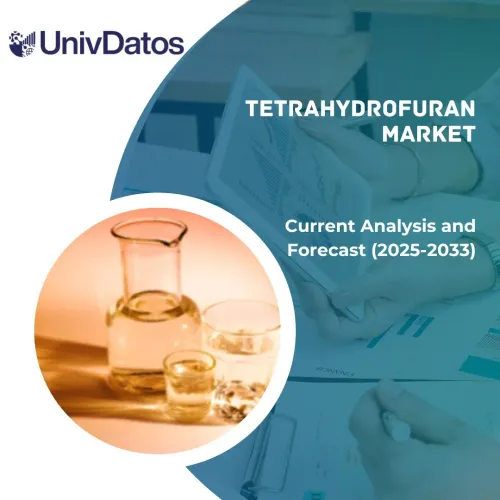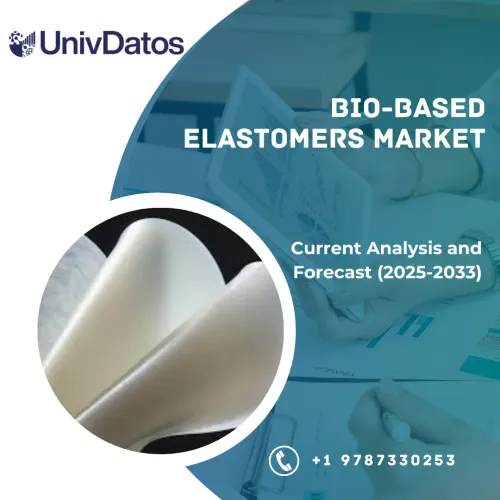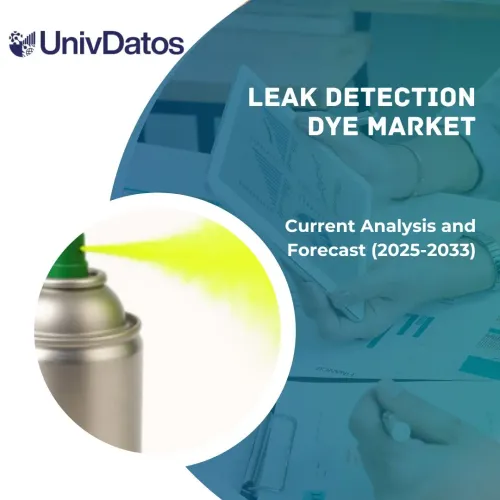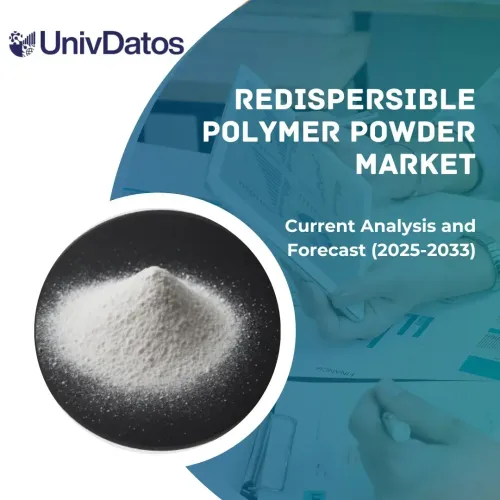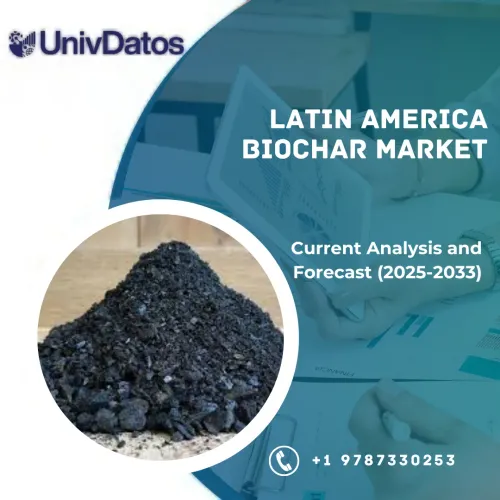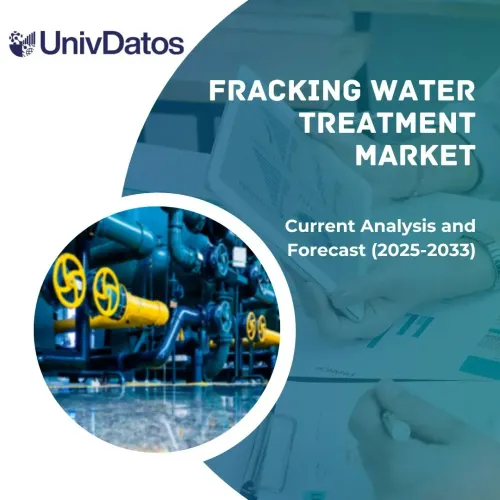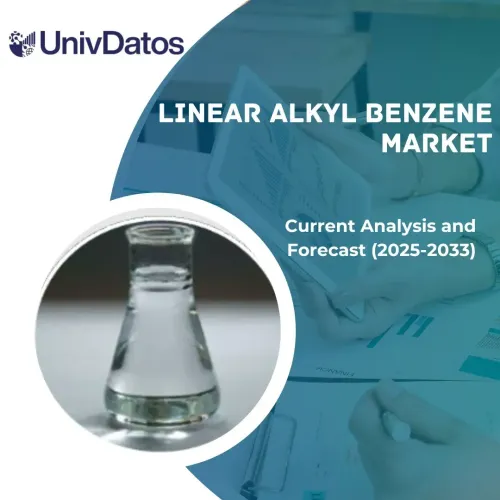- Trang chủ
- Về chúng tôi
- Ngành
- Dịch vụ
- Đọc
- Liên hệ với chúng tôi
Thị trường Methanol khu vực Châu Á-Thái Bình Dương: Phân tích Hiện tại và Dự báo (2021-2030)
Chú trọng vào Nguyên liệu đầu vào (Khí tự nhiên, Than đá, Loại khác); Dẫn xuất (Formaldehyde, Axit Axetic, MTBE, MMA, DMT, Methanethiol, Methylamines, Methyl Chloride, Pha trộn & Đốt cháy xăng, Biodiesel, DME, Pin nhiên liệu, Methanol-To-Olefins, Loại khác); Ngành (Hóa chất & Polymer, Vận tải, Loại khác); và Quốc gia
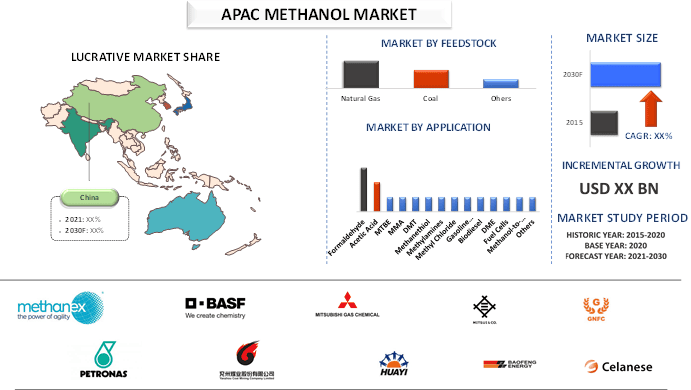
Thị trường Methanol khu vực có khả năng thể hiện sự tăng trưởng đáng kể trong giai đoạn dự báo (2021-2030). Hiện tại, nhiên liệu hóa thạch chiếm thị phần lớn nhất trong quá trình tổng hợp methanol. Nhiên liệu hóa thạch, đặc biệt là khí tự nhiên và than đá là nguyên liệu đầu vào tiêu thụ lớn nhất cho sản xuất methanol. Do đó, tính khả dụng trong nước của các nguyên liệu đầu vào này có thể giúp khu vực APAC ổn định giá methanol vì giá cả khả thi về mặt thương mại hiện là một trong những yếu tố chính thúc đẩy sự tăng trưởng của thị trường methanol. Than đá là một trong những nguyên liệu đầu vào được tiêu thụ nhiều nhất trong sản xuất methanol. Các nền kinh tế khu vực là một trong những nhà sản xuất than đá lớn nhất trên toàn cầu. Do đó, các nền kinh tế khu vực có lợi thế quan trọng trong việc sản xuất methanol trên quy mô lớn. Trung Quốc, Ấn Độ và Úc là một trong những nhà sản xuất than đá lớn nhất trên toàn cầu. Mặc dù năm 2021 đã chứng kiến một cuộc khủng hoảng than đá với tình trạng thiếu than trên khắp các nền kinh tế lớn như Trung Quốc và Ấn Độ, điều này đến lượt nó làm tăng giá than đá. Do đó, ảnh hưởng đến thị trường methanol
Thông tin chi tiết được trình bày trong báo cáo
“Trong số các nguyên liệu đầu vào, than đá nắm giữ thị phần đáng kể trên thị trường vào năm 2020.”
Dựa trên nguyên liệu đầu vào, thị trường được phân loại thành khí tự nhiên, than đá và các loại khác. Trong số này, than đá chiếm thị phần đáng kể trên thị trường và có khả năng thể hiện sự tăng trưởng đáng kể trong giai đoạn dự báo. Điều này chủ yếu có thể là do việc sử dụng than đá quy mô lớn ở Trung Quốc để sản xuất methanol do than đá dồi dào dẫn đến sản xuất methanol chi phí thấp.
“Trong số các dẫn xuất, formaldehyde chiếm thị phần đáng kể trên thị trường vào năm 2020.”
Dựa trên các dẫn xuất, thị trường được phân loại thành formaldehyde, axit axetic, MTBE, MMA, DMT, methanethiol, methylamine, methyl chloride, pha trộn và đốt cháy xăng, biodiesel, DME, pin nhiên liệu, methanol-to-olefin và các loại khác. Trong số này, formaldehyde chiếm thị phần nổi bật trên thị trường và có khả năng thể hiện sự tăng trưởng đáng kể trong giai đoạn dự báo. Các hoạt động xây dựng gia tăng trong khu vực do quá trình đô thị hóa nhanh chóng và dân số ngày càng tăng đã dẫn đến nhu cầu ngày càng tăng về vật liệu xây dựng. Vì formaldehyde được sử dụng rộng rãi trong sản xuất một số vật liệu xây dựng nên danh mục này chiếm thị phần đáng kể.
“Trung Quốc nắm giữ thị phần lớn nhất trên Thị trường Methanol APAC”
Để hiểu rõ hơn về việc áp dụng thị trường Methanol, thị trường được phân tích dựa trên sự hiện diện khu vực của nó ở các quốc gia như Hàn Quốc, Nhật Bản, Đài Loan, Trung Quốc, Ấn Độ, Malaysia, Brunei, Indonesia, Việt Nam, Philippines, Thái Lan, Singapore, Úc và phần còn lại của APAC. Trung Quốc chiếm thị phần nổi bật trong miếng bánh thị trường methanol khu vực. Điều này chủ yếu là do nền tảng lớn của ngành công nghiệp hóa chất. Nước này là nhà sản xuất hóa chất lớn nhất trên toàn cầu. Điều này đã giúp đất nước chiếm được vị trí nổi bật trên thị trường.
Lý do nên mua báo cáo này:
- Nghiên cứu bao gồm phân tích định cỡ và dự báo thị trường được xác thực bởi các chuyên gia hàng đầu trong ngành
- Báo cáo trình bày đánh giá nhanh về hiệu suất tổng thể của ngành trong nháy mắt
- Báo cáo bao gồm phân tích chuyên sâu về các đối thủ trong ngành nổi bật với trọng tâm chính vào tài chính kinh doanh chính, danh mục sản phẩm, chiến lược mở rộng và các phát triển gần đây
- Xem xét chi tiết các động lực, hạn chế, xu hướng chính và cơ hội thịnh hành trong ngành
- Nghiên cứu bao quát toàn diện thị trường trên các phân khúc khác nhau
- Phân tích sâu về ngành ở cấp độ quốc gia
Tùy chọn tùy chỉnh:
Thị trường Methanol APAC có thể được tùy chỉnh thêm theo yêu cầu hoặc bất kỳ phân khúc thị trường nào khác. Bên cạnh đó, UMI hiểu rằng bạn có thể có nhu cầu kinh doanh riêng của mình, vì vậy hãy thoải mái liên hệ với chúng tôi để nhận được một báo cáo hoàn toàn phù hợp với yêu cầu của bạn.
Mục lục
Phân tích thị trường lịch sử, ước tính thị trường hiện tại và dự báo thị trường tương lai của Methanol là ba bước chính được thực hiện để tạo và phân tích sự chấp nhận của nó trên toàn khu vực. Nghiên cứu thứ cấp toàn diện đã được thực hiện để thu thập các số liệu thị trường lịch sử và ước tính quy mô thị trường hiện tại. Thứ hai, để xác thực những hiểu biết sâu sắc này, nhiều phát hiện và giả định đã được xem xét. Hơn nữa, các cuộc phỏng vấn sơ cấp toàn diện cũng được thực hiện với các chuyên gia trong ngành trên toàn bộ chuỗi giá trị của ngành Methanol. Sau khi giả định và xác thực các số liệu thị trường thông qua các cuộc phỏng vấn sơ cấp, chúng tôi đã sử dụng phương pháp tiếp cận từ dưới lên để dự báo quy mô thị trường hoàn chỉnh. Sau đó, các phương pháp phân tích chi tiết thị trường và phương pháp tam giác dữ liệu đã được áp dụng để ước tính và phân tích quy mô thị trường của các phân khúc và phân đoạn con mà ngành liên quan đến. Phương pháp chi tiết được giải thích dưới đây:
Phân tích Quy mô Thị trường Lịch sử
Bước 1: Nghiên cứu Chuyên sâu về Các Nguồn Thứ Cấp:
Nghiên cứu thứ cấp chi tiết đã được thực hiện để có được quy mô thị trường lịch sử của Methanol thông qua các nguồn nội bộ của công ty như báo cáo thường niên & báo cáo tài chính, các bài thuyết trình về hiệu quả hoạt động, thông cáo báo chí, v.v., và các nguồn bên ngoài bao gồm tạp chí, tin tức & bài viết, ấn phẩm của chính phủ, ấn phẩm của đối thủ cạnh tranh, báo cáo ngành, cơ sở dữ liệu của bên thứ ba và các ấn phẩm đáng tin cậy khác.
Bước 2: Phân khúc Thị trường:
Sau khi có được quy mô thị trường lịch sử của thị trường Methanol, chúng tôi đã tiến hành phân tích thứ cấp chi tiết để thu thập thông tin chi tiết về thị trường hiện tại và chia sẻ cho các phân khúc & phân đoạn con khác nhau cho các quốc gia lớn. Các phân khúc chính có trong báo cáo bao gồm theo nguyên liệu đầu vào, dẫn xuất và ngành.
Bước 3: Phân tích Yếu tố:
Sau khi có được quy mô thị trường lịch sử của các phân khúc và phân đoạn con khác nhau, chúng tôi đã tiến hành phân tích yếu tố chi tiết để ước tính quy mô thị trường hiện tại của Methanol. Hơn nữa, chúng tôi đã tiến hành phân tích yếu tố bằng cách sử dụng các biến phụ thuộc và độc lập như tăng cường các sáng kiến của chính phủ để hỗ trợ nền kinh tế methanol và giảm sự phụ thuộc vào nhiên liệu hóa thạch thông thường. Một phân tích kỹ lưỡng đã được thực hiện cho kịch bản phía cung và cầu xem xét việc tăng cường đầu tư, quan hệ đối tác hàng đầu, sáp nhập và mua lại, mở rộng kinh doanh và ra mắt sản phẩm trong ngành Methanol.
Ước tính và Dự báo Quy mô Thị trường Hiện tại
Xác định Quy mô Thị trường Hiện tại: Dựa trên những hiểu biết sâu sắc có thể hành động từ 3 bước trên, chúng tôi đã xác định được quy mô thị trường hiện tại, những người chơi chính trên thị trường Methanol khu vực và thị phần của từng phân khúc. Tất cả các phần trăm chia sẻ cần thiết và phân tích chi tiết thị trường đã được xác định bằng cách sử dụng phương pháp thứ cấp đã đề cập ở trên và đã được xác minh thông qua các cuộc phỏng vấn sơ cấp.
Ước tính & Dự báo: Để ước tính và dự báo thị trường, trọng số đã được gán cho các yếu tố khác nhau bao gồm các động lực & xu hướng, hạn chế và cơ hội có sẵn cho các bên liên quan. Sau khi phân tích các yếu tố này, các kỹ thuật dự báo có liên quan, tức là phương pháp tiếp cận từ dưới lên đã được áp dụng để đưa ra dự báo thị trường đến năm 2030 cho các phân khúc và phân đoạn con khác nhau trên khắp các quốc gia khu vực lớn. Phương pháp nghiên cứu được áp dụng để ước tính quy mô thị trường bao gồm:
- Quy mô thị trường của ngành, về giá trị (US$) và tỷ lệ chấp nhận Methanol trên khắp các thị trường lớn
- Tất cả các phần trăm chia sẻ, phân tích và phân tích chi tiết của các phân khúc thị trường và phân đoạn con
- Những người chơi chính trên thị trường Methanol về công suất sản xuất methanol. Ngoài ra, các chiến lược tăng trưởng được các công ty này áp dụng để cạnh tranh trên thị trường đang phát triển nhanh chóng.
Xác thực Quy mô và Thị phần Thị trường
Nghiên cứu Sơ cấp: Các cuộc phỏng vấn chuyên sâu đã được thực hiện với các Nhà Lãnh đạo Ý kiến Chính (KOL) bao gồm các Giám đốc Điều hành Cấp cao (CXO/VP, Trưởng phòng Kinh doanh, Trưởng phòng Tiếp thị, Trưởng phòng Vận hành và Trưởng phòng Khu vực, Trưởng phòng Quốc gia, v.v.) trên khắp các quốc gia lớn. Các phát hiện nghiên cứu sơ cấp sau đó đã được tóm tắt và phân tích thống kê đã được thực hiện để chứng minh giả thuyết đã nêu. Thông tin đầu vào từ nghiên cứu sơ cấp đã được hợp nhất với các phát hiện thứ cấp, do đó biến thông tin thành những hiểu biết sâu sắc có thể hành động.
Phân chia Người tham gia Sơ cấp ở Các Quốc gia Khác nhau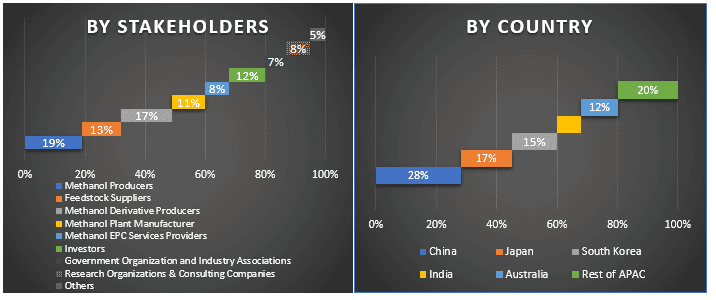
Kỹ thuật Thị trường
Kỹ thuật tam giác dữ liệu đã được sử dụng để hoàn thành việc ước tính thị trường tổng thể và để đưa ra các số liệu thống kê chính xác của từng phân khúc và phân đoạn con của thị trường Methanol. Dữ liệu được chia thành nhiều phân khúc & phân đoạn con sau khi nghiên cứu các thông số và xu hướng khác nhau trong các lĩnh vực nguyên liệu đầu vào, dẫn xuất và ngành.
Mục tiêu chính của nghiên cứu thị trường Methanol
Các xu hướng thị trường hiện tại & tương lai của Methanol khu vực đã được xác định rõ trong nghiên cứu. Các nhà đầu tư có thể đạt được những hiểu biết chiến lược để dựa vào quyết định đầu tư của họ từ phân tích định tính và định lượng được thực hiện trong nghiên cứu. Các xu hướng thị trường hiện tại và tương lai sẽ xác định mức độ hấp dẫn tổng thể của thị trường ở cấp quốc gia, cung cấp một nền tảng cho người tham gia công nghiệp khai thác thị trường chưa được khai thác để hưởng lợi với tư cách là người đi đầu. Các mục tiêu định lượng khác của các nghiên cứu bao gồm:
- Phân tích quy mô thị trường hiện tại và dự báo của Methanol về giá trị (US$). Ngoài ra, phân tích quy mô thị trường hiện tại và dự báo của các phân khúc và phân đoạn con khác nhau
- Các phân khúc trong nghiên cứu bao gồm các lĩnh vực nguyên liệu đầu vào, dẫn xuất và ngành
- Phân tích rõ ràng về khung pháp lý cho ngành Methanol
- Phân tích chuỗi giá trị liên quan đến sự hiện diện của các trung gian khác nhau, cùng với việc phân tích hành vi của khách hàng và đối thủ cạnh tranh của ngành
- Phân tích quy mô thị trường hiện tại và dự báo của Methanol cho các quốc gia lớn
- Các quốc gia lớn được phân tích trong báo cáo bao gồm Hàn Quốc, Nhật Bản, Đài Loan, Trung Quốc, Ấn Độ, Malaysia, Brunei, Indonesia, Việt Nam, Philippines, Thái Lan, Singapore, Úc và Phần còn lại của Châu Á Thái Bình Dương
- Hồ sơ công ty của những người chơi trên thị trường Methanol và các chiến lược tăng trưởng được họ áp dụng để duy trì trên thị trường đang phát triển
Phân tích chuyên sâu ở cấp quốc gia về ngành
Liên quan Báo cáo
Khách hàng đã mua mặt hàng này cũng đã mua

